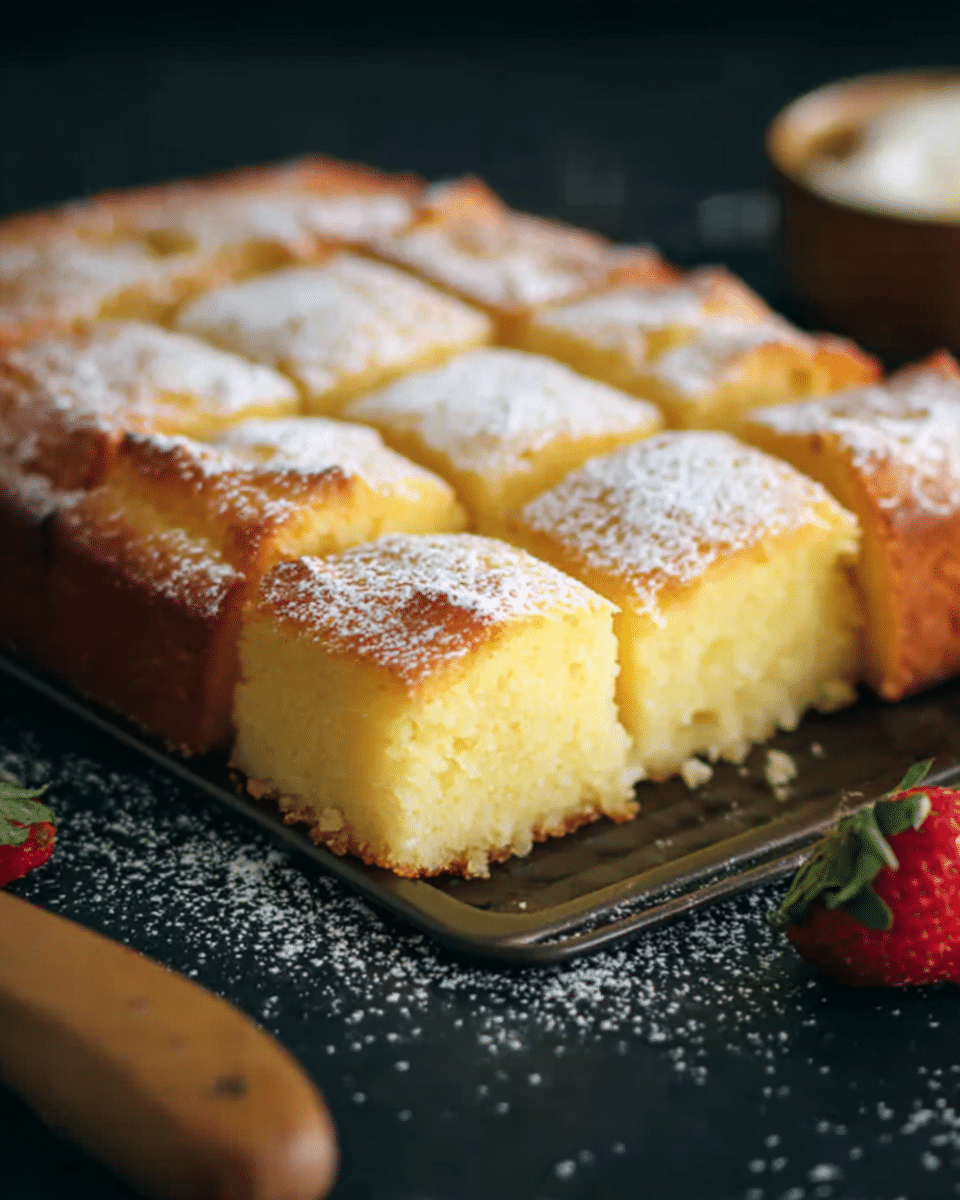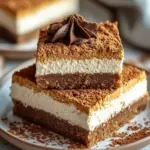The French Butter Cake is a timeless dessert that combines rich butteriness with a tender, moist crumb. Its golden crust and soft interior make it a perfect treat for any occasion, from afternoon tea to dinner parties. This cake is as simple as it is indulgent. With just a few basic ingredients, you can create a dessert that looks impressive and tastes divine. Serve plain, dusted with powdered sugar, or paired with fresh berries for an elegant touch.
Full recipe:
Ingredients:
-
1 cup unsalted butter, softened
-
1 cup granulated sugar
-
4 large eggs
-
1 teaspoon vanilla extract
-
2 cups all-purpose flour
-
2 teaspoons baking powder
-
1/4 teaspoon salt
-
1/2 cup whole milk
Directions:
-
Preheat oven to 350°F (175°C). Grease and line a 9-inch round cake pan with parchment paper.
-
In a large bowl, cream the butter and sugar together until light and fluffy.
-
Beat in the eggs one at a time, followed by the vanilla extract.
-
In a separate bowl, whisk together the flour, baking powder, and salt.
-
Gradually fold the dry ingredients into the butter mixture, alternating with milk until just combined.
-
Pour the batter into the prepared cake pan and smooth the top with a spatula.
-
Bake for 35-40 minutes, or until a toothpick inserted in the center comes out clean.
-
Allow the cake to cool in the pan for 10 minutes, then transfer to a wire rack to cool completely.
Prep Time: 15 minutes | Cooking Time: 40 minutes | Total Time: 55 minutes
Kcal: 420 kcal | Servings: 8 servings
Introduction to French Butter Cake
French Butter Cake is a classic dessert that has captured the hearts of home bakers and professional chefs alike. Known for its rich, buttery flavor and tender, moist crumb, this cake is a staple in French patisserie traditions and has gained worldwide popularity. Unlike more complex French pastries, the butter cake is approachable for home bakers, yet it delivers an elegant and sophisticated flavor profile that impresses on any occasion. Its simplicity, combined with indulgent richness, makes it a perfect dessert for afternoon tea, special gatherings, or just a comforting treat after a long day.
The origins of the French Butter Cake date back to the early 20th century when butter became a widely accessible ingredient in European kitchens. French bakers perfected the technique of creaming butter and sugar to create light, fluffy textures that melt in your mouth. Over the decades, this cake has evolved, but its core remains the same: buttery, moist, and effortlessly delicious. Today, it is enjoyed in homes and cafés worldwide, making it a timeless dessert that transcends trends.
Why This Recipe Stands Out
What makes this French Butter Cake recipe exceptional is its careful balance of ingredients and simple technique. The use of high-quality unsalted butter ensures a deep, creamy flavor that infuses the cake, while the proper creaming method guarantees a soft and airy texture. The inclusion of whole milk adds moisture without compromising the cake’s structure, resulting in a melt-in-your-mouth experience. Additionally, this recipe avoids unnecessary ingredients, letting the buttery flavor shine naturally.
Compared to other cake recipes, this version maintains the perfect balance between sweetness and richness. It’s not overly sweet, allowing the natural buttery flavor to take center stage. This makes it ideal for pairing with coffee, tea, or fresh fruit. Its simplicity also makes it highly customizable—you can add vanilla, citrus zest, or even a light glaze to suit your taste preferences.
Health Benefits of Ingredients
While indulgent, French Butter Cake also provides nutritional benefits when enjoyed in moderation. Butter, a natural source of vitamin A, contributes to eye health and supports the immune system. Eggs are rich in protein and essential amino acids, promoting muscle repair and overall body function. Milk provides calcium and vitamin D, supporting bone health. Even the flour, when chosen as whole grain or enriched, can contribute fiber and additional nutrients. By using quality, minimally processed ingredients, you ensure that every slice is not only delicious but also slightly nourishing.
Additionally, baking at home allows you to control the ingredients and avoid preservatives, artificial flavors, and excessive sugar often found in store-bought cakes. This means your French Butter Cake can be a wholesome, homemade treat for the whole family.
Perfect Texture and Flavor
The hallmark of a great French Butter Cake is its texture. This recipe achieves that perfect crumb by carefully incorporating air into the butter and sugar during the creaming process. This step creates a light, airy structure that allows the cake to rise beautifully. The balance of wet and dry ingredients ensures the cake is moist without being dense, while the golden crust adds a subtle caramelized flavor. Each bite delivers a tender, buttery experience that is rich yet not heavy—a true testament to the art of French baking.
The flavor profile is equally important. Butter is the star, providing a deep, savory-sweet taste that is complemented by the subtle sweetness of sugar. The gentle aroma of vanilla enhances the richness without overpowering the natural flavor of the butter. The result is a harmonious and sophisticated dessert that appeals to both casual dessert lovers and refined palates.
Tips for Baking Perfection
To achieve the best results with this French Butter Cake, it is essential to follow a few key tips. First, ensure all ingredients are at room temperature. Softened butter and eggs blend more effectively, producing a uniform batter and optimal rise. Next, avoid overmixing once the flour is added, as this can create a dense cake. Instead, gently fold in dry ingredients until just incorporated. Finally, monitor baking time closely; an oven thermometer can ensure accurate temperature, and a toothpick test will confirm doneness. Following these tips will help you achieve a cake that is light, moist, and golden on top.
Serving Suggestions
French Butter Cake is incredibly versatile when it comes to serving. It can be enjoyed plain, showcasing its buttery richness, or dusted lightly with powdered sugar for an elegant presentation. Fresh berries or a fruit compote add natural sweetness and a refreshing contrast to the richness of the cake. For a more decadent treat, serve with whipped cream, a drizzle of chocolate sauce, or a scoop of vanilla ice cream. This cake also works well as a base for layered desserts, allowing you to transform it into an elaborate creation for special occasions.
Occasions to Enjoy French Butter Cake
This cake is suitable for a wide range of occasions. Its simplicity and elegance make it perfect for afternoon tea, brunches, or casual family gatherings. For festive occasions such as birthdays or holidays, it can be dressed up with fruits, glazes, or decorative toppings. Its universal appeal ensures that it will be enjoyed by guests of all ages, making it a reliable choice for both everyday and celebratory desserts.
Storage and Shelf Life
Proper storage helps maintain the cake’s freshness and moisture. Store in an airtight container at room temperature for up to three days. For longer preservation, wrap in plastic wrap and refrigerate for up to a week. It can also be frozen for up to two months; simply thaw at room temperature before serving. When reheating, a brief warm-up in the oven or microwave will help restore its soft, buttery texture.
Why Bake at Home?
Baking French Butter Cake at home provides both emotional and practical benefits. There is a sense of satisfaction in creating a homemade dessert from scratch. Additionally, homemade cakes allow full control over ingredient quality, flavor, and portion size. It is a creative and relaxing activity that can be shared with family and friends. The aroma of baking butter and sugar filling the kitchen also contributes to an inviting, comforting atmosphere—a sensory experience beyond taste.
Variations to Try
Once comfortable with the basic recipe, you can experiment with variations. Lemon zest or orange zest can brighten the flavor, while almond extract adds a subtle nutty undertone. For a chocolate version, fold in cocoa powder or chocolate chips. You can also create layered versions with jam or cream fillings. These variations allow bakers to customize the cake to their preferences while keeping the core buttery essence intact.
Cultural Significance
French Butter Cake is more than just a dessert; it reflects the French appreciation for simple yet elegant culinary creations. French cuisine often emphasizes quality ingredients and precise techniques, and this cake exemplifies that philosophy. It is a testament to how minimal components—high-quality butter, eggs, sugar, and flour—can create a dessert of exceptional flavor and texture. Its widespread popularity also highlights the global influence of French baking traditions.
Common Mistakes to Avoid
Even a simple cake can have pitfalls. Common mistakes include using cold butter, overmixing the batter, and incorrect oven temperatures. Cold butter does not cream properly, leading to a dense cake. Overmixing the batter develops gluten, which results in a tough texture. Incorrect oven temperatures may cause uneven baking or a burnt crust. Paying attention to these details ensures consistent results every time.
Pairings and Beverage Suggestions
French Butter Cake pairs wonderfully with a variety of beverages. Traditional French tea or coffee complements its richness perfectly. For a more indulgent pairing, hot chocolate or a sweet dessert wine enhances its buttery flavor. Fresh fruits or light creams can also be served alongside, providing a balance to the cake’s richness and creating a multi-dimensional tasting experience.
Conclusion
French Butter Cake is a timeless dessert that embodies elegance, simplicity, and indulgence. Its buttery richness, tender crumb, and golden crust make it a universally loved treat suitable for any occasion. Baking it at home offers creative satisfaction, control over ingredients, and an opportunity to enjoy a fresh, wholesome dessert. Whether enjoyed plain, with fruits, or in a layered creation, this cake remains a symbol of French culinary excellence and continues to delight dessert lovers around the world. Its versatility, flavor, and ease of preparation ensure that it will remain a cherished recipe in your kitchen for years to come.






